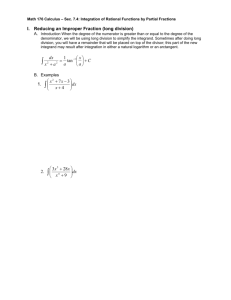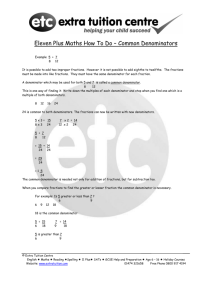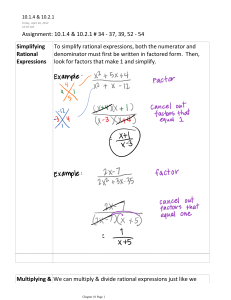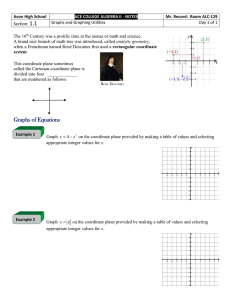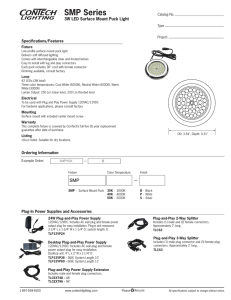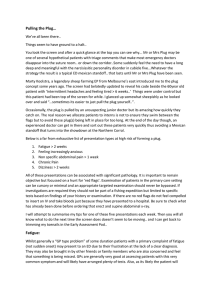Algebra and Partial Fractions - Solutions Math 125 Integration of
advertisement
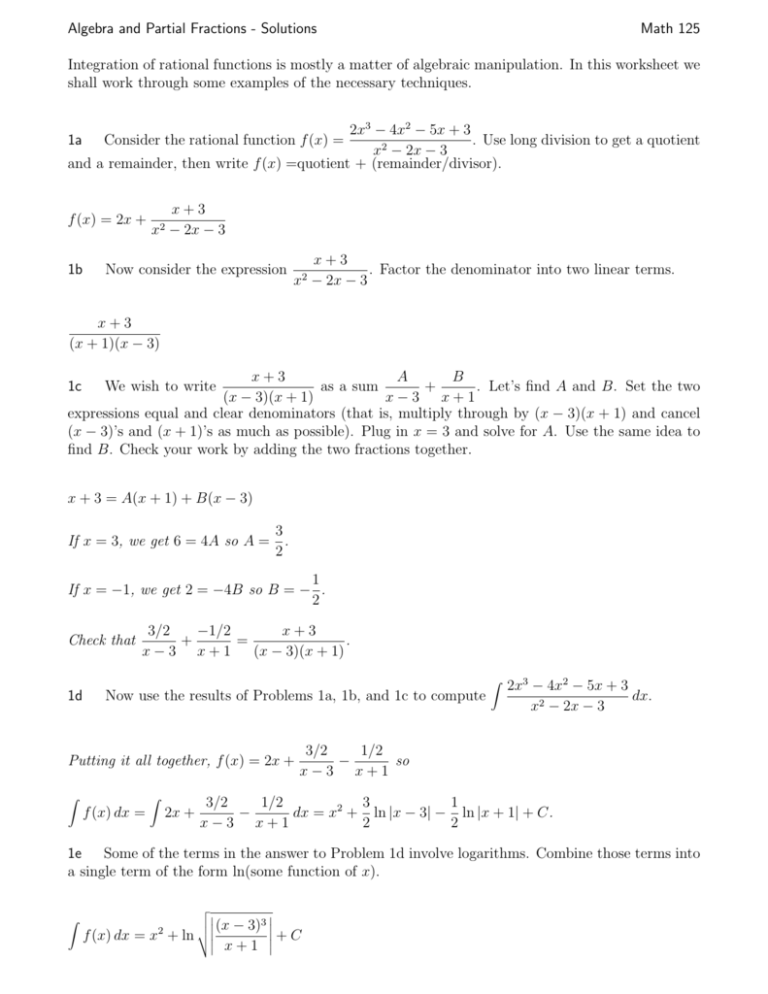
Algebra and Partial Fractions - Solutions Math 125 Integration of rational functions is mostly a matter of algebraic manipulation. In this worksheet we shall work through some examples of the necessary techniques. 2x3 − 4x2 − 5x + 3 . Use long division to get a quotient x2 − 2x − 3 and a remainder, then write f (x) =quotient + (remainder/divisor). 1a Consider the rational function f (x) = f (x) = 2x + 1b x2 x+3 − 2x − 3 Now consider the expression x2 x+3 . Factor the denominator into two linear terms. − 2x − 3 x+3 (x + 1)(x − 3) x+3 A B as a sum + . Let’s find A and B. Set the two (x − 3)(x + 1) x−3 x+1 expressions equal and clear denominators (that is, multiply through by (x − 3)(x + 1) and cancel (x − 3)’s and (x + 1)’s as much as possible). Plug in x = 3 and solve for A. Use the same idea to find B. Check your work by adding the two fractions together. 1c We wish to write x + 3 = A(x + 1) + B(x − 3) 3 If x = 3, we get 6 = 4A so A = . 2 1 If x = −1, we get 2 = −4B so B = − . 2 Check that 1d 3/2 −1/2 x+3 + = . x−3 x+1 (x − 3)(x + 1) Now use the results of Problems 1a, 1b, and 1c to compute Putting it all together, f (x) = 2x + Z f (x) dx = Z 2x + Z 2x3 − 4x2 − 5x + 3 dx. x2 − 2x − 3 1/2 3/2 − so x−3 x+1 3/2 1/2 3 1 − dx = x2 + ln |x − 3| − ln |x + 1| + C. x−3 x+1 2 2 1e Some of the terms in the answer to Problem 1d involve logarithms. Combine those terms into a single term of the form ln(some function of x). Z v u u (x − 3)3 +C f (x) dx = x2 + ln t x+1 3x + 1 . The problem here is that one of the linear x(x + 1)2 factors in the denominator is squared. Partial fraction theory says the best we can do is to get this B C A + . Let’s find A, B and C. one in the form + x x + 1 (x + 1)2 2a Next, consider the function f (x) = First set the two expressions equal and clear denominators. Plug in x = 0 and solve for A. Plug in x = −1 and solve for C. 3x + 1 = A(x + 1)2 + Bx(x + 1) + Cx If x = 0, we get 1 = A. If x = −1, we get −2 = −C so C = 2. 2b Now that you’ve found A and C, you can find B by plugging in any other convenient value for x. Do so. We have 3x + 1 = (x + 1)2 + Bx(x + 1) + 2x. Plug in x = 1, say, to get 4 = 22 + 2B + 2 so that B = −1. 2c Now compute We have Z 3x + 1 dx. x(x + 1)2 1 1 2 3x + 1 = − + . x(x + 1)2 x x + 1 (x + 1)2 (It’s a good idea to check that this is indeed true.) Then Z Z 3x + 1 1 2 2 1 dx = − + dx = ln |x| − ln |x + 1| − + C. 2 2 x(x + 1) x x + 1 (x + 1) x+1 x 2 − This can also be written ln + C. x+1 x+1
